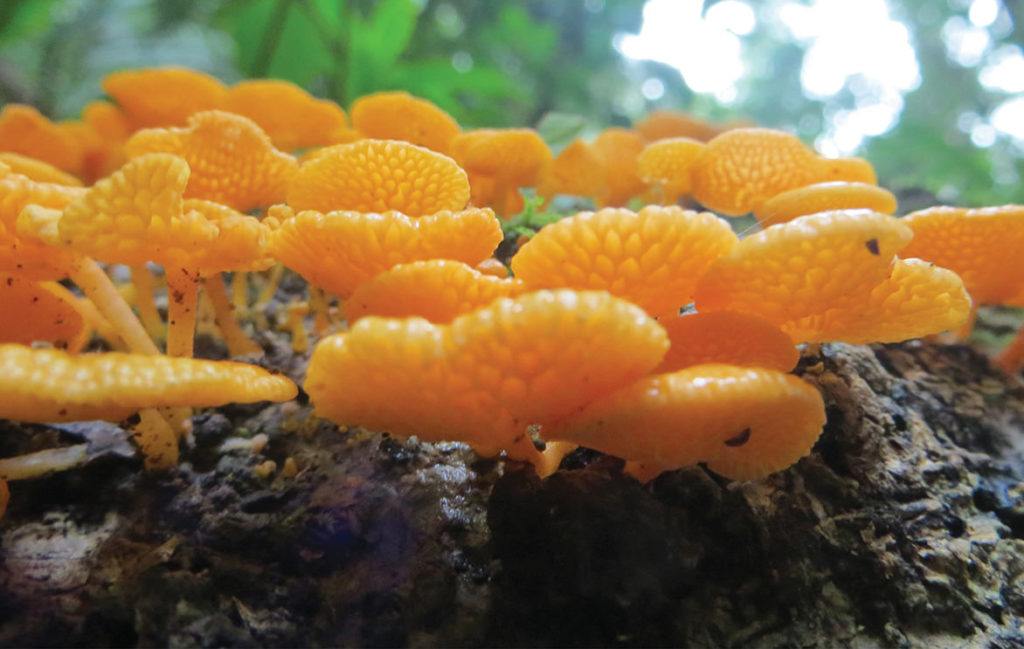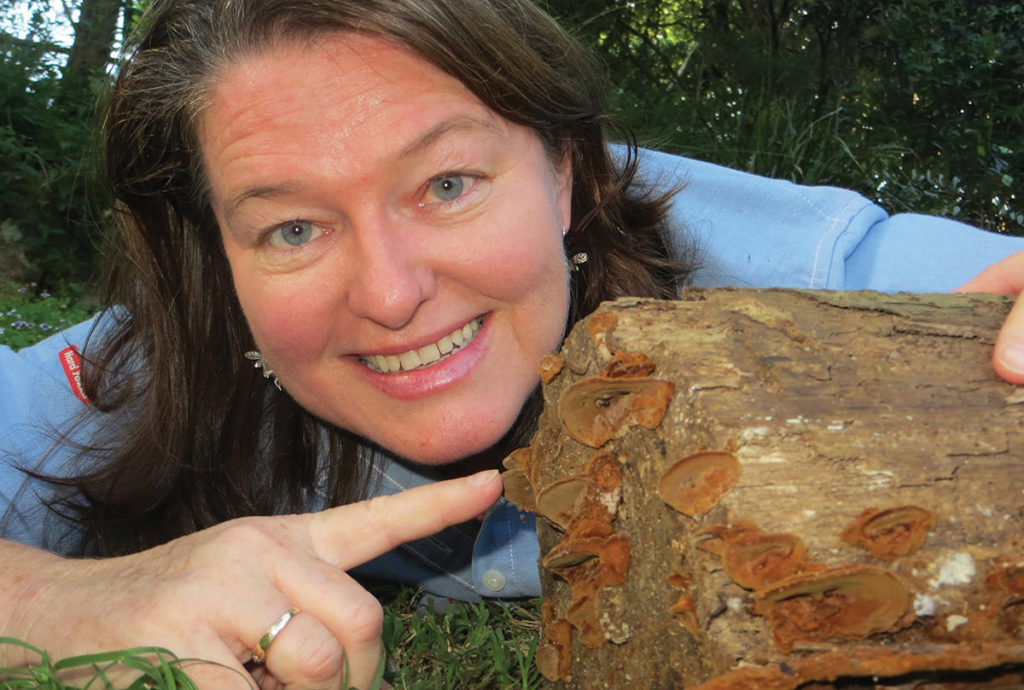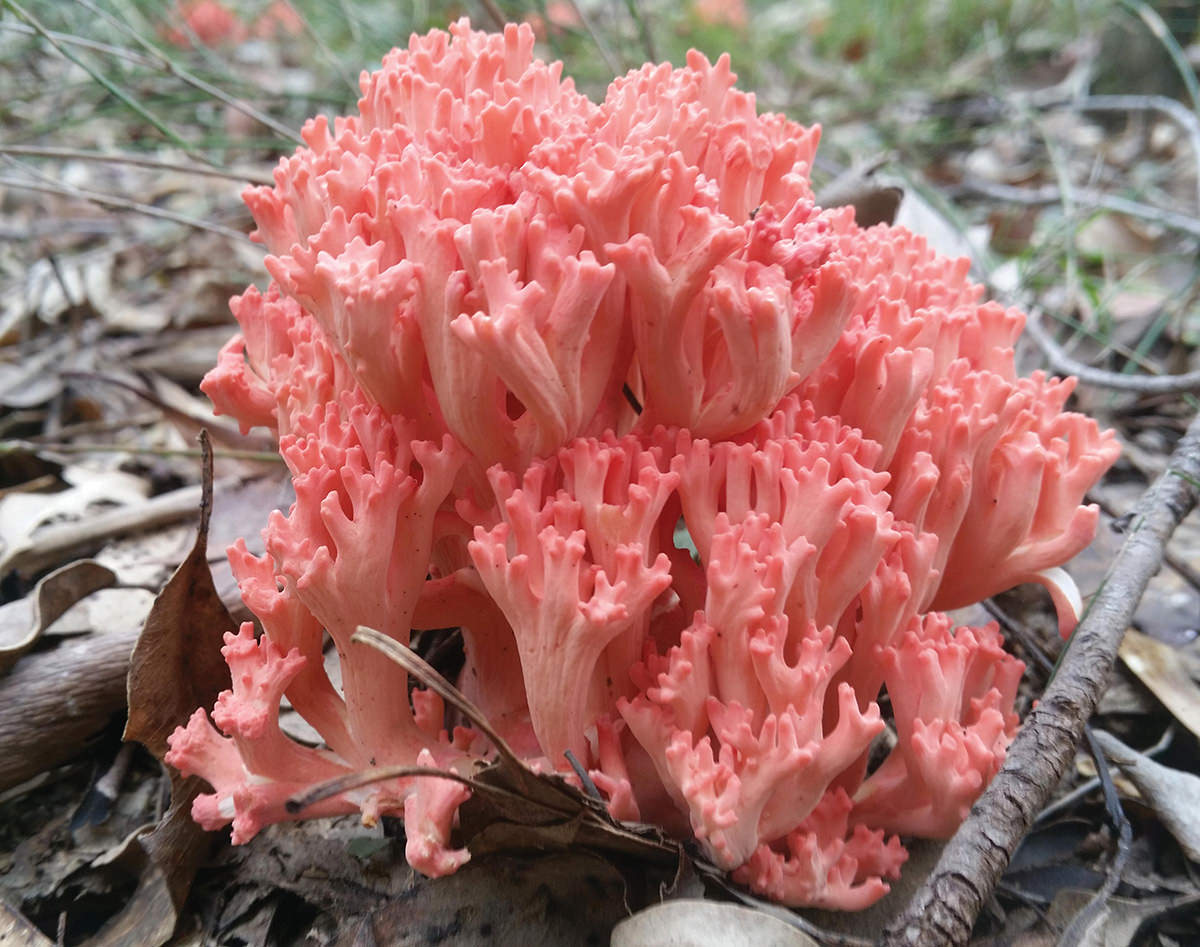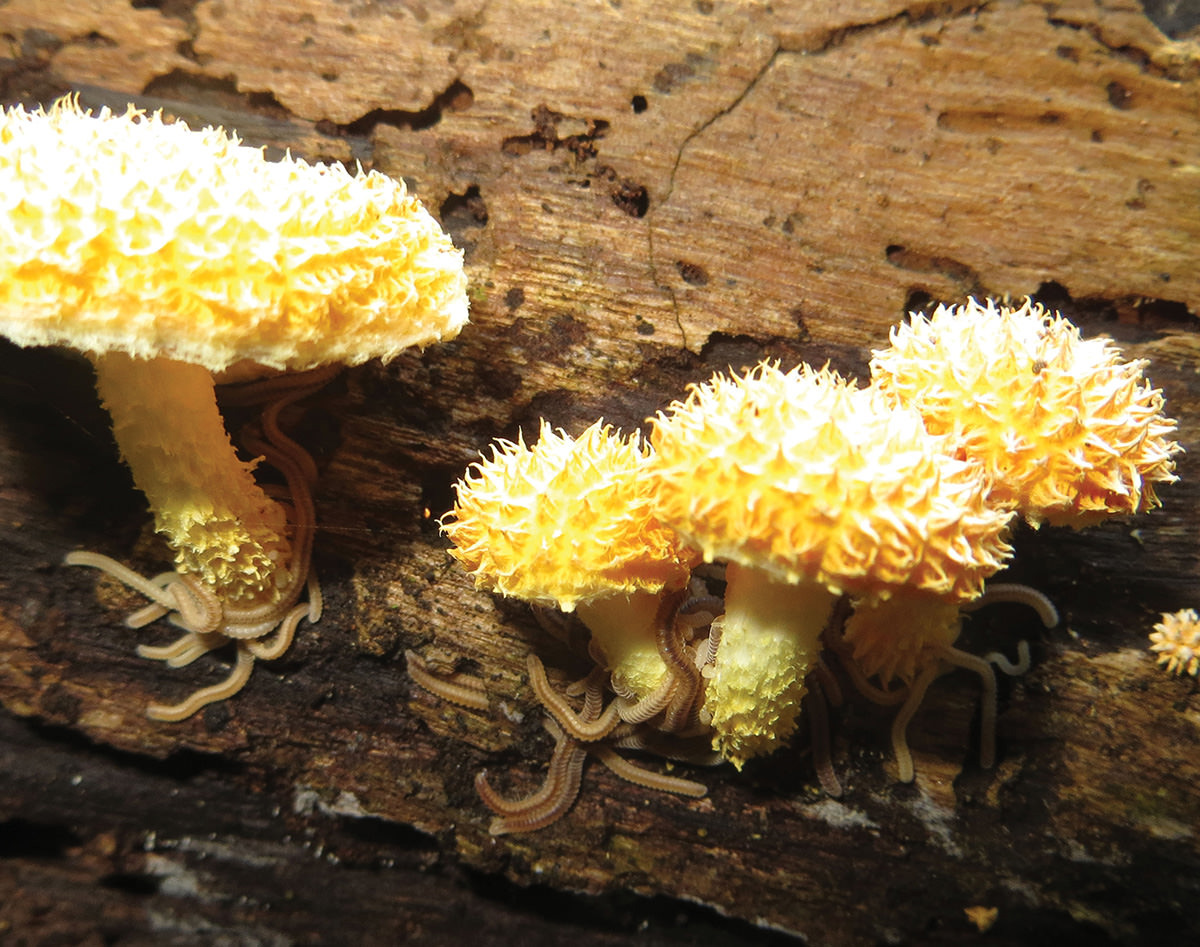The study of fungi is called mycology and those who study fungi are called ‘fun guys’ amongst their friends and peers, or more technically, mycologist. Believe it or not, fungi were thought to be on this planet prior to the first plants.
There are two categories of fungi:
- Macrofungi – which can be seen and often appreciated by the human eye; and
- Microfungi – which include moulds, smuts, mildew and plant rusts with microscopic fruiting bodies.
Fungi are literally everywhere – in the air we breathe, on the human body, in the sea and freshwater, in bushland and in your own backyard.
Fungi are not plant or animals and just like royalty they have their own Kingdom, the fungal kingdom, which is often referred to as the ‘kingdom of decay’. Fungi play many important roles within ecosystems. They obtain nutrients from other living organisms or decaying matter. They help exchange nutrients, minerals and water between plants and the soil. Ninety percent of plants are in a mutually beneficial relationship with fungi (mycorrhizal association). Plants provide fungi with food in the form of carbohydrates, and fungi assist plants in the transfer of water and in-turn provides them with nutrients, phosphorus and nitrogen.
Most of a fungus (singular of fungi) lies hidden in wood, leaf litter or soil in the form of mycelia, which creates a mat of fine threads (hyphae) that bind leaves, sticks and other materials together whilst also breaking them down. Mycelia help retain moisture in the soil and assist in the prevention of surface erosion. The next time you dig a hole in your garden and find a collection of interconnecting white filaments under your mulch or in your soil you will now know what it is.

Plants communicate with each other through the ‘internet of fungi’. The mycelium (plural of mycelia) act as an underground network linking the roots of plants. They share nutrients and information through this network and they have been known to spread toxic chemicals through the network to sabotage unwelcome plants to an area. They can also boost their host plant’s immune system by using defence chemicals (this is called priming) to make them more resistant to disease.
Fungi reproduce two ways: 1) from broken hyphae and, 2) from spores that can be windblown, carried by animals or water.
Without fungal networks, soils would lose their productivity, animals would have less food, decomposition and nutrient cycling would cease, humans would lose medicinal resources and the world would be less aesthetically pleasing. I’m always excited to find a new species of fungus in the Redlands, like the Pink Coral (above), and I love to share their beauty and uniqueness with others.

Did you know, just like plants, fungi have introduced species to contend and compete with? If you see weed fungi, be sure not to touch or walk on them as you could end up spreading their spores to other areas that aren’t currently infested.
Article by Maree Manby
Conservation Partnerships Officer
Redland City Council



Thank you for this information. We have been confused by the Orange Ping Pong Bats (Favolaschia Calocera) they have been appearing in Drouin Wetlands and seem to disappear overnight when the rain stops. Do you know if anything feeds off them?
Hi Mary. You may wish to ask the Qld Mycological Society that question. We are sure someone there will be able to help you. https://www.facebook.com/groups/TheQueenslandMycologicalSociety/